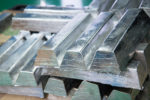Introduction to the Role of a Banksman A banksman plays a vital role in the safe manoeuvring of vehicles, particularly large commercial ones such as lorries, by providing precise guidance and directions to drivers. This is especially critical during reversing operations where visibility and space constraints pose significant risks. Key Responsibilities and Safety Protocols Ensuring […]
Category: Construction
Construction section includes different information relating to the construction sector. This market has different risks and hazards to that of other sectors by the nature of the work that is carried out.
Training needed if you work in the construction sector will vary from site induction, health & safety, COSHH, manual handling and many more. You may also be required to have various required training and work CITB cards. In order to get a card, you will be required to undertake training and a test.
One course we offer is a level 1 health and safety that is especially designed for this sector and this is a regulated qualification from TQUK who are an awarding organisation regulated by Ofqual. You may also be required to undertake other training depending on the work you will be carring out.
If you would like anything included in his section or have any questions please email us and we will add them in.
Legal Requirements and Safety Guidelines for Handheld Power Tools
The legal requirements for the use of handheld power tools in UK workplaces are governed by several regulations, including the Health and Safety at Work etc. Act 1974 (HSWA), the Provision and Use of Work Equipment Regulations 1998 (PUWER), and the Personal Protective Equipment at Work Regulations 1992 (PPE). These regulations aim to ensure that […]
Legal Requirements and Safety Practices for Welding Equipment
Title: Legal Requirements and Safety Practices for Welding Equipment in UK Workplaces Meta Description: Explore the to ensure a safe and compliant work environment. Keywords: welding equipment, UK workplaces, legal requirements, types of welding machines, dangers, accidents, safety practices The legal requirements for the use of welding equipment in UK workplaces are governed by several […]
Legal Requirements and Safety Guidelines for Abrasive Wheels
The legal requirements for the use of abrasive wheels and power tools incorporating abrasive wheels in UK workplaces are governed by several regulations, including the Health and Safety at Work etc. Act 1974 (HSWA), the Provision and Use of Work Equipment Regulations 1998 (PUWER), the Personal Protective Equipment at Work Regulations 1992 (PPE), and the […]
Comprehensive Guide to Understanding and Preventing Suspension Trauma in the Workplace
Understanding Suspension Trauma and Its Effects on the Body Suspension trauma also referred to as orthostatic intolerance, is a critical condition that can occur when an individual remains suspended in a harness for an extended duration, often following a fall arrest incident. In such scenarios, blood may accumulate in the legs due to gravity, leading […]

Lead and its dangers
Lead does not come under the COSHH regulations. There are separate regulations covering Lead and the problems caused by lead. Problems with lead are not just in construction but lead products can be found in all workplaces. There are many works in industrial processes which create lead dust, fume or vapour. Some processes include: Stripping […]
Permit to Work
Understanding the Permit to Work Procedure in High-Risk Industries The permit to work procedure is a critical safety protocol originally developed in the chemical industry. Its principles and procedures are applicable in managing complex risks across various industries. The core principle mandates that specific operations can only proceed with the express permission of a responsible […]

Vibration at Work
Vibration at Work is a problem that can cause short and long-term injuries to employees. It can cause damage to hands, fingers and any other part of the body. It includes the use of power tools and being on a machine like a digger when your whole body is vibrated. The correct names for the two types of […]

Electrical safety at work
Electrical safety is something we must not take for granted. You cannot see electricity but it can be fatal, injure, cause fires and damage property. Electrical hazards come from all types of electricity, batteries, generators, single-phase mains, three-phase mains power, static and lightning. All these can cause serious harm or death. Generally the greater the […]